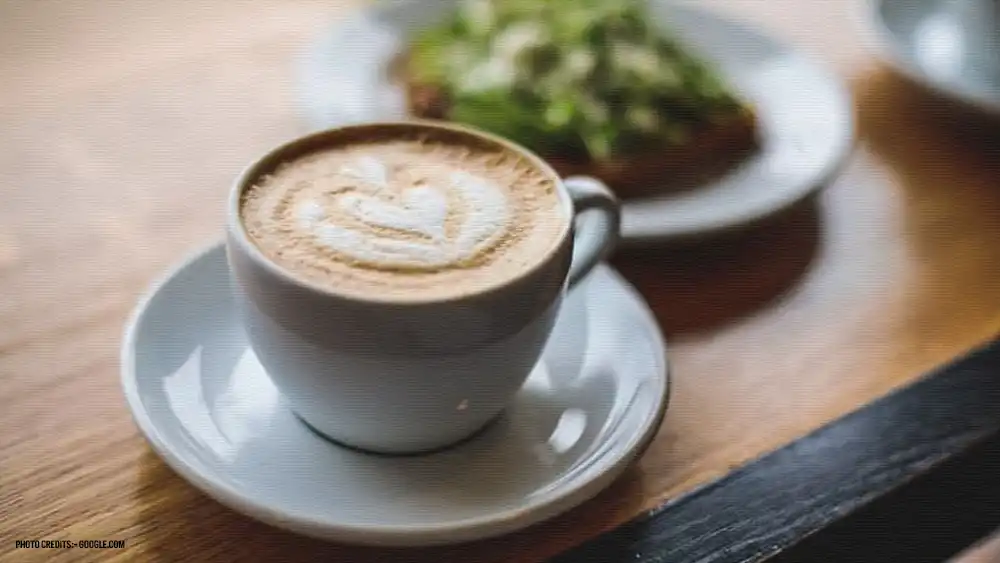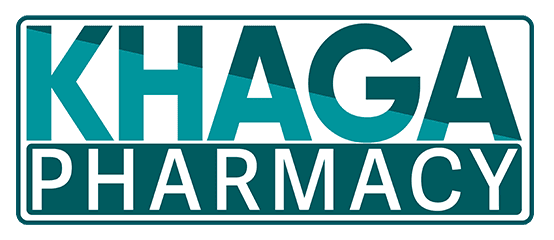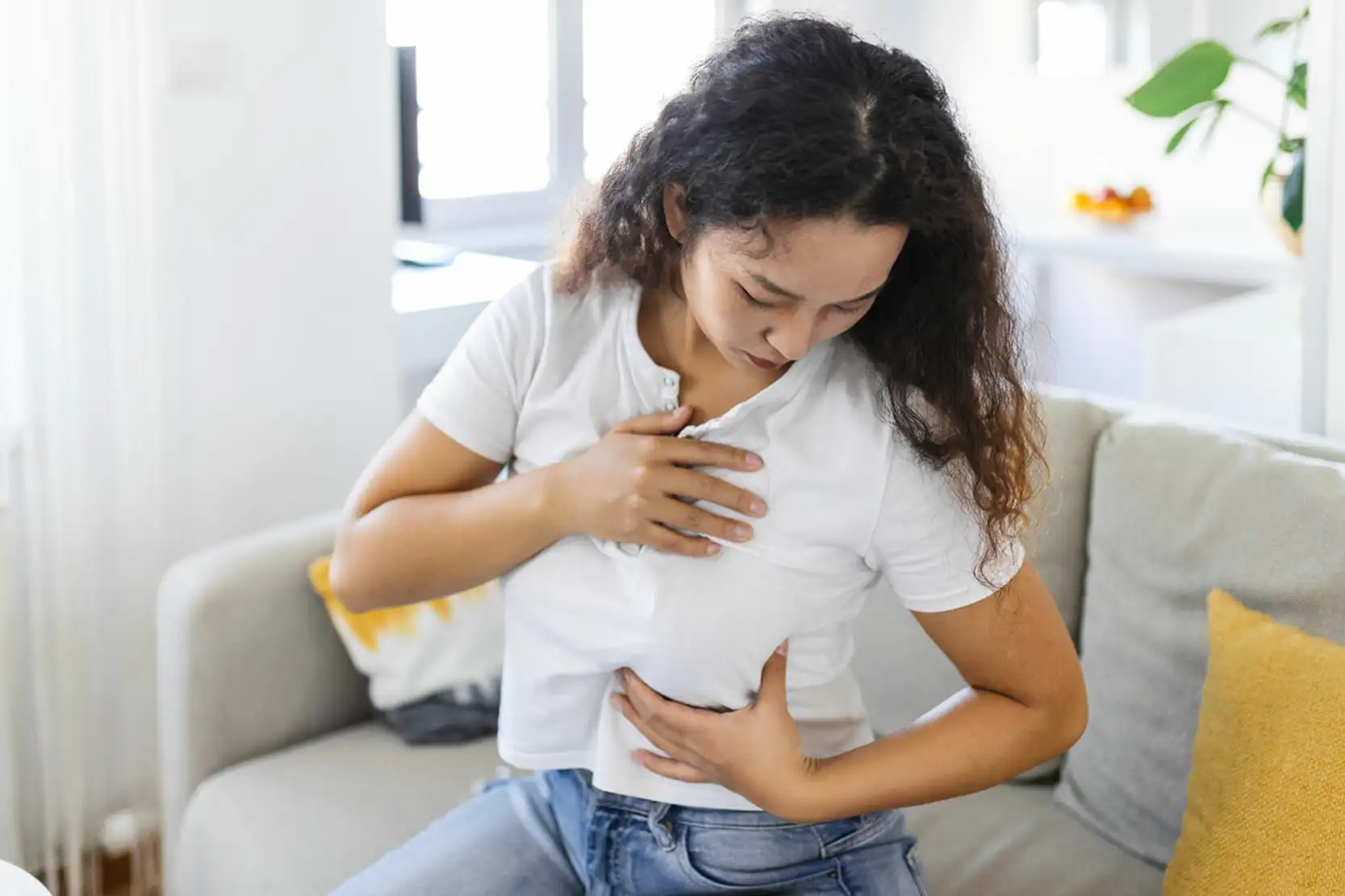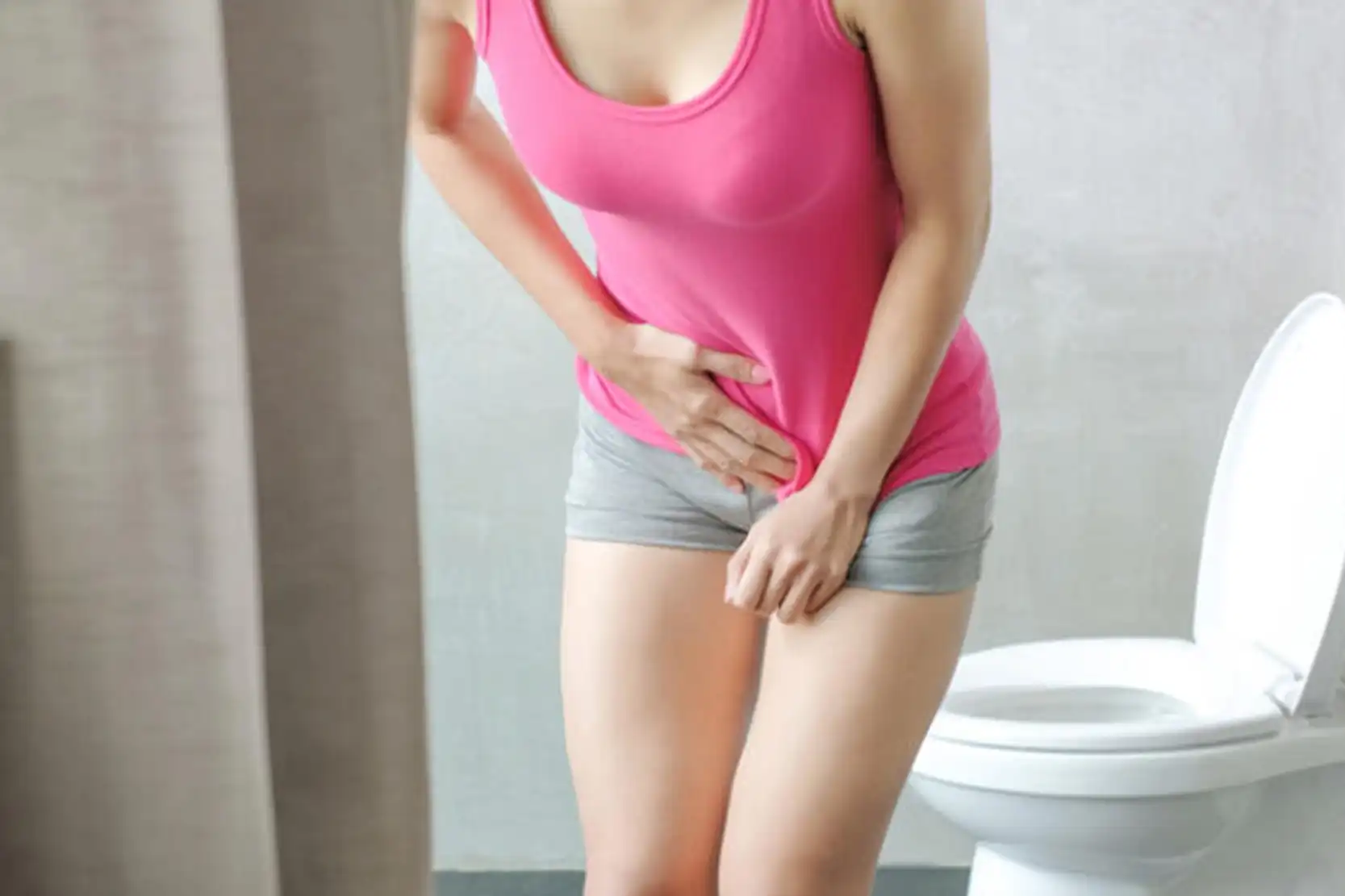
HEALTH BLOG
Does Cappuccino Have Caffeine?: Unveiling the Truth
-
Rahul Priydarss
Discover the answer to ‘Does Cappuccino Have Caffeine?’ in this comprehensive guide. Learn about cappuccino’s ingredients, caffeine content, preparation methods, and health benefits. Explore the origins of this beloved coffee drink and compare it with other popular coffee beverages. Whether you’re a coffee enthusiast or curious about caffeine intake, this article provides insights into enjoying cappuccino while understanding its nutritional impact.
Introduction Does Cappuccino Have Caffeine:
Cappuccino, a popular coffee beverage, is a staple in many coffee shops around the world. Originating from Italy, cappuccino is traditionally made with equal parts of espresso, steamed milk, and milk foam, creating a rich and creamy texture. The espresso, which serves as the base for the cappuccino, is a strong coffee brewed by forcing hot water through finely ground coffee beans.
What is a Cappuccino?:
A cappuccino is a classic coffee beverage that originates from Italy, known for its rich and balanced flavor. It is traditionally made with equal parts of espresso, steamed milk, and milk foam. The preparation involves brewing a shot of espresso as the base, then adding steamed milk to create a creamy texture, and finally topping it with a thick layer of frothed milk. The result is a harmonious blend of strong coffee taste, creamy milk, and frothy foam, often enjoyed in the morning or as a mid-day treat. Cappuccinos are typically served in small, porcelain cups, allowing the flavors and textures to be savored in every sip.

Table of Contents
Origin and History of Cappuccino:
The cappuccino, a beloved coffee beverage, has its origins deeply rooted in Italian coffee culture. Its history can be traced back to the early 20th century, although its roots go even further into the 17th century with the invention of the espresso machine and the influence of Viennese coffee traditions.
Early Beginnings: The name “cappuccino” is derived from the Capuchin friars, a religious order of monks known for their distinctive brown robes and shaved heads. The color of the espresso mixed with frothed milk in a cappuccino resembles the color of the Capuchin robe, leading to the name.
Evolution in Italy: In Italy, the development of the cappuccino as we know it today began in the early 1900s with the invention of the espresso machine. The first espresso machines, created by Luigi Bezzera and Desiderio Pavoni, allowed for the brewing of coffee at high pressure, producing a rich and concentrated shot of espresso. This innovation paved the way for the cappuccino.
The modern cappuccino, featuring a balance of espresso, steamed milk, and milk foam, became popular in Italian cafes in the post-World War II era. By the 1950s, it had become a staple of Italian coffee culture, enjoyed primarily in the morning.
International Spread: The cappuccino’s popularity spread beyond Italy in the latter half of the 20th century, particularly as espresso machines became more common in cafes around the world. The rise of specialty coffee shops in the 1980s and 1990s, especially in the United States and Europe, further cemented the cappuccino’s status as a global coffee favorite.
Ingredients of Cappuccino:
- Espresso: The base of a cappuccino, typically a single shot (about 1 ounce or 30 milliliters).
- Steamed Milk: Approximately equal to the volume of the espresso.
- Milk Foam: An additional layer of frothy milk, about the same volume as the espresso and steamed milk.
| Ingredients | Quantity |
|---|---|
| Espresso | 1 shot (approximately 1 ounce) |
| Steamed Milk | 1/3 cup (about 2-3 ounces) |
| Milk Foam | 1/3 cup (about 2-3 ounces) |
Preparation Method of Cappuccino:
Prepare the Espresso: Use an espresso machine to brew a single shot of espresso. This involves forcing hot water through finely-ground coffee beans at high pressure, resulting in a concentrated and rich coffee shot.
Steam the Milk: Pour cold milk into a steaming pitcher. The type of milk used can vary, but whole milk is preferred for its creamy texture. Submerge the steam wand of the espresso machine just below the surface of the milk and turn on the steam. This process heats the milk while incorporating air to create a creamy, microfoam texture. Continue steaming until the milk reaches a temperature of around 150°F (65°C). The milk should have a velvety consistency with fine bubbles.
Assemble the Cappuccino: Pour the steamed milk into the espresso shot, holding back the foam with a spoon. Spoon the milk foam on top of the steamed milk to create a thick, frothy layer. The traditional cappuccino has roughly equal parts of espresso, steamed milk, and milk foam, creating a balanced and harmonious drink.
Serve: Cappuccinos are typically served in small, pre-warmed porcelain cups, holding around 5-6 ounces (150-180 milliliters). For added flavor, some people sprinkle a light dusting of cocoa powder or cinnamon on top of the foam, though this is optional.
What is Caffeine?:
Caffeine is a natural stimulant found in various plants, including coffee beans, tea leaves, cacao pods (used to make chocolate), and kola nuts. It belongs to a class of compounds called methylxanthines and is known for its stimulating effects on the central nervous system.
Effects of Caffeine: When consumed, caffeine acts as a mild central nervous system stimulant, which can help increase alertness and reduce fatigue. It achieves this by blocking the action of adenosine, a neurotransmitter that promotes relaxation and sleepiness. By inhibiting adenosine, caffeine promotes the release of other neurotransmitters such as dopamine and norepinephrine, which contribute to increased alertness and improved mood.
Sources of Caffeine: Caffeine is commonly consumed in beverages such as coffee, tea, and energy drinks. It is also found in various foods and medications, including chocolate and certain pain relievers. The amount of caffeine in these sources can vary widely, with coffee and energy drinks typically containing higher concentrations compared to tea and chocolate.
Caffeine Content: The caffeine content in beverages can vary based on factors such as the type of bean or leaf used, the brewing method, and serving size. For example, a typical 8-ounce (240-milliliter) cup of brewed coffee contains approximately 80-100 milligrams of caffeine, while the same amount of black tea contains about 30-50 milligrams. Energy drinks can have much higher caffeine concentrations, ranging from 80 milligrams to over 200 milligrams per serving.
Effects of caffeine on the body: Moderate consumption of caffeine (about 200-400 milligrams per day, or roughly 2-4 cups of coffee) is generally considered safe for most adults. Beyond enhancing alertness, caffeine can also temporarily improve cognitive function, physical performance, and endurance. However, excessive consumption can lead to side effects such as insomnia, jitteriness, increased heart rate, and digestive issues.
Caffeine in Coffee:
Caffeine Content: Coffee is one of the most popular sources of caffeine worldwide. The caffeine content in coffee can vary widely depending on factors such as the type of coffee bean, the brewing method, and the serving size. Generally, a standard 8-ounce (240-milliliter) cup of brewed coffee contains about 80-100 milligrams of caffeine.
Factors Affecting Caffeine Content:
Type of Coffee Bean: The two primary types of coffee beans are arabica and robusta. Arabica beans generally contain less caffeine (about 70-140 milligrams per 8-ounce cup) compared to robusta beans, which can have higher caffeine content (about 100-200 milligrams per 8-ounce cup).
Brewing Method: The method of brewing coffee also influences its caffeine content. Espresso, for example, is a concentrated form of coffee made by forcing hot water through finely-ground coffee beans at high pressure. A single shot of espresso (about 1 ounce or 30 milliliters) typically contains around 63 milligrams of caffeine, but this can vary depending on the specific blend and preparation.
Serving Size: The amount of coffee consumed directly affects the intake of caffeine. Larger servings or multiple cups will naturally result in higher caffeine intake.
Health Considerations:
Moderate Consumption: Moderate coffee consumption, defined as 3-4 cups per day (providing about 300-400 milligrams of caffeine), is generally considered safe for most healthy adults. This level of consumption has been associated with potential health benefits, including improved cognitive function and reduced risk of certain diseases such as Parkinson’s disease and type 2 diabetes.
Individual Sensitivity: Individuals may vary in their sensitivity to caffeine. Some people may experience side effects such as jitteriness, anxiety, or insomnia with even moderate amounts of caffeine, while others may tolerate higher doses without adverse effects.
Cappuccino vs. Other Coffee Drinks:
Cappuccino is a classic coffee drink known for its balanced combination of equal parts espresso, steamed milk, and milk foam. This creates a creamy texture with a thick layer of frothy foam on top. Typically served in a 5-6 ounce cup, cappuccinos offer a strong espresso flavor that is complemented by the smoothness of steamed milk and the lightness of the foam. The preparation involves brewing a shot of espresso, which is then topped with steamed milk and finished with a generous layer of milk foam, resulting in a harmonious blend of flavors and textures.
Latte, on the other hand, consists of one or two shots of espresso, steamed milk, and a small amount of milk foam. It has a creamier texture due to the higher proportion of steamed milk and a light layer of foam on top. Usually served in an 8-12 ounce cup, lattes have a milder coffee flavor compared to cappuccinos. The preparation process involves combining espresso with a larger amount of steamed milk and finishing with a small amount of milk foam, making it a popular choice for those who prefer a milkier coffee experience.
Macchiato is a more intense coffee drink with minimal milk. It typically includes a shot of espresso with a small amount of milk or milk foam. The result is a strong espresso flavor with just a hint of milk to soften the taste. Served in a 2-3 ounce cup, macchiatos provide a concentrated coffee experience. The preparation involves “staining” or “marking” the espresso with a dollop of steamed milk or foam, which gives the drink its name.
Flat White offers a velvety and smooth coffee experience, with a thin layer of microfoam that is less frothy than that of a cappuccino. Made with espresso and steamed milk, flat whites are generally served in a 6-8 ounce cup. They feature a rich coffee flavor with a creamy texture, making them more intense than a latte but smoother than a cappuccino. The preparation involves topping the espresso with steamed milk and a thin layer of microfoam, achieving a creamy consistency.
Americano is a straightforward coffee drink made by diluting espresso with hot water. This results in a texture similar to regular brewed coffee but with a more robust flavor. Typically served in an 8-12 ounce cup, Americanos offer a strong coffee taste that is smoother than drip coffee due to the espresso base. The preparation involves adding hot water to a shot or two of espresso, adjusting the strength to the desired level.
Mocha is a sweet and indulgent coffee drink that combines espresso, steamed milk, chocolate syrup or powder, and often whipped cream. With a creamy texture and a chocolatey twist, mochas are usually served in an 8-12 ounce cup. They offer a blend of coffee and chocolate flavors, making them sweeter than other coffee drinks. The preparation involves mixing espresso with chocolate syrup or powder, adding steamed milk, and optionally topping with whipped cream, creating a dessert-like coffee experience.
Caffeine Content in Cappuccino:
Cappuccino is a popular coffee drink known for its balanced combination of espresso, steamed milk, and milk foam. The primary source of caffeine in a cappuccino comes from the espresso shot used as its base. Understanding the caffeine content in a cappuccino requires examining the amount of espresso used and other factors that may influence caffeine levels.
A standard cappuccino is typically made with a single shot of espresso, which contains approximately 63 milligrams of caffeine. However, the exact amount can vary based on the type of coffee beans used and the brewing process. For instance, robusta beans have higher caffeine content compared to arabica beans. Additionally, the method of brewing and the size of the espresso shot can impact the caffeine levels. In some cases, a cappuccino may be made with a double shot of espresso, doubling the caffeine content to about 126 milligrams.
The serving size of a cappuccino is generally around 5-6 ounces (150-180 milliliters), which includes the espresso, steamed milk, and milk foam. This relatively small size means that the caffeine concentration remains consistent with the espresso content. In comparison to other coffee drinks, a cappuccino offers a moderate caffeine boost, balancing the strong flavor of espresso with the creamy texture of steamed milk and foam.
It’s important to note that individual sensitivity to caffeine can vary. Some people may experience the stimulating effects of caffeine more intensely, while others may have a higher tolerance. Factors such as age, body weight, and overall health can influence how caffeine affects an individual. For those who are sensitive to caffeine or trying to limit their intake, opting for a cappuccino made with a single shot of espresso might be a preferable choice.

Health Benefits of Cappuccino:
Cappuccino, a beloved coffee beverage, offers more than just a delightful drinking experience. When consumed in moderation, it can also provide various health benefits thanks to its key ingredients: espresso, steamed milk, and milk foam. Here are some potential health benefits of enjoying a cappuccino.
1. Antioxidant Properties: Coffee, including the espresso in a cappuccino, is rich in antioxidants. These compounds help combat oxidative stress in the body by neutralizing free radicals. Antioxidants are known to reduce inflammation and lower the risk of chronic diseases, such as heart disease and cancer. Regular, moderate coffee consumption has been linked to a reduced risk of certain cancers, including liver and colorectal cancer.
2. Enhanced Cognitive Function: Caffeine, the main active ingredient in espresso, is a well-known stimulant that can improve cognitive function. It works by blocking adenosine, a neurotransmitter that promotes sleep, thereby increasing alertness and concentration. Moderate caffeine intake can also improve memory, mood, and overall mental performance.
3. Heart Health: Research suggests that moderate coffee consumption may be beneficial for heart health. Studies have shown that drinking coffee in moderation can reduce the risk of heart disease and stroke. The antioxidants in coffee contribute to these benefits by improving blood vessel function and reducing inflammation.
4. Weight Management: Cappuccino can aid in weight management when consumed as part of a balanced diet. The caffeine in espresso can boost metabolism and increase fat burning. Additionally, the protein in milk helps promote satiety, reducing the likelihood of overeating. However, it’s important to consume cappuccino without excessive added sugars or syrups to maintain these benefits.
5. Reduced Risk of Type 2 Diabetes: Several studies have found that regular coffee consumption is associated with a lower risk of developing type 2 diabetes. The compounds in coffee, including caffeine and antioxidants, may improve insulin sensitivity and help regulate blood sugar levels. A daily cappuccino, when consumed without excessive sweeteners, can be part of a diabetes-prevention strategy.
6. Improved Physical Performance: Caffeine is known to enhance physical performance by increasing adrenaline levels, which prepare the body for physical exertion. It also helps break down body fat, making it available as a source of energy. Athletes and fitness enthusiasts often consume caffeine before workouts to improve endurance and performance.
7. Bone Health: Milk, a key ingredient in cappuccino, is a good source of calcium and vitamin D, both of which are essential for bone health. Consuming milk-based beverages like cappuccino can contribute to daily calcium intake, supporting strong bones and reducing the risk of osteoporosis.
Potential Health Risks of Cappuccino:
While cappuccino can offer several health benefits, it’s important to be aware of the potential health risks associated with its consumption, particularly when consumed in excess or with certain additives. Here are some of the potential health risks of drinking cappuccino:=.
1. High Caffeine Intake: Excessive consumption of caffeine can lead to several health issues, including anxiety, restlessness, insomnia, and increased heart rate. For sensitive individuals, even moderate amounts of caffeine can cause these symptoms. Consuming multiple cappuccinos a day can quickly lead to an intake of caffeine beyond the recommended 400 milligrams per day for most adults.
2. Added Sugars: Many people enjoy cappuccinos with added sugars, flavored syrups, or whipped cream, which can significantly increase the calorie and sugar content of the drink. High sugar intake is associated with a range of health problems, including weight gain, increased risk of type 2 diabetes, and dental issues.
3. Lactose Intolerance: Cappuccino contains steamed milk, which can be problematic for individuals who are lactose intolerant. Symptoms of lactose intolerance include bloating, gas, diarrhea, and stomach cramps. For those affected, opting for lactose-free milk or plant-based alternatives can help mitigate these issues.
4. Cholesterol Concerns: Dairy milk contains cholesterol and saturated fats, which, in excessive amounts, can contribute to increased blood cholesterol levels and a higher risk of heart disease. Individuals with cholesterol concerns might consider using low-fat or plant-based milk alternatives.
5. Bone Health Concerns: While moderate coffee consumption can have some positive effects on bone health, excessive caffeine intake has been linked to a decrease in calcium absorption, which may negatively affect bone density over time. This is particularly concerning for individuals at risk of osteoporosis.
6. Acid Reflux and Digestive Issues: The acidity of coffee, including the espresso in cappuccinos, can trigger acid reflux and exacerbate symptoms in those with gastroesophageal reflux disease (GERD). Coffee can also stimulate the production of stomach acid, potentially leading to digestive discomfort in sensitive individuals.
7. Dependence and Withdrawal: Regular consumption of caffeine can lead to dependence, and sudden cessation can result in withdrawal symptoms such as headaches, fatigue, irritability, and difficulty concentrating. Gradual reduction in caffeine intake can help manage these withdrawal effects.
8. Interference with Sleep: Consuming cappuccinos, especially later in the day, can interfere with sleep patterns due to the stimulating effects of caffeine. Poor sleep quality can lead to a range of health problems, including impaired cognitive function, mood disturbances, and increased risk of chronic conditions.
Common Misconceptions About Cappuccino and Caffeine:
1. Cappuccinos Contain More Caffeine Than Other Coffee Drinks: Many people assume that cappuccinos contain more caffeine than other coffee drinks due to their rich flavor and concentrated nature. However, a standard cappuccino usually contains a single shot of espresso, which has about 63 milligrams of caffeine. This is similar to other espresso-based drinks like lattes and macchiatos. The caffeine content primarily depends on the amount of espresso used rather than the type of drink.
2. Decaf Means No Caffeine: There is a common belief that decaffeinated coffee, including decaf cappuccinos, contains no caffeine at all. In reality, decaffeinated coffee still contains a small amount of caffeine, usually around 2-5 milligrams per cup. While this amount is significantly lower than regular coffee, it is not entirely caffeine-free.
3. Dark Roast Coffee Has More Caffeine Than Light Roast: A widespread misconception is that dark roast coffee has more caffeine than light roast due to its stronger flavor. In fact, the roasting process can slightly reduce the caffeine content. Light roast coffee beans tend to have slightly more caffeine than dark roast beans, but the difference is minimal. The caffeine content in a cappuccino is more influenced by the amount of espresso used rather than the roast level.
4. Milk in Cappuccino Reduces Caffeine’s Effects: Some believe that adding milk to coffee, as in a cappuccino, dilutes the caffeine and reduces its stimulating effects. While milk can affect the absorption rate of caffeine, it does not significantly diminish the overall caffeine content or its effects. The primary factor influencing caffeine’s impact is the amount consumed, not whether it is mixed with milk.
5. Caffeine is Dehydrating: Many people think that caffeine is a diuretic and can lead to dehydration. While caffeine does have mild diuretic effects, the amount present in a cappuccino is unlikely to cause significant dehydration. The fluid content in the coffee itself compensates for any minor diuretic effect, making moderate consumption of cappuccinos and other caffeinated beverages unlikely to lead to dehydration.
6. Espresso-Based Drinks Are Stronger Than Brewed Coffee: There is a misconception that espresso-based drinks, including cappuccinos, are stronger and contain more caffeine than brewed coffee. While espresso is more concentrated, a typical serving size is much smaller. An 8-ounce cup of brewed coffee generally contains more caffeine (95 milligrams on average) than a single shot of espresso (63 milligrams).
7. Caffeine Stays in Your System for Hours: Some believe that once you consume caffeine, it stays in your system for an entire day. While caffeine’s half-life is about 3-5 hours, meaning half of it is eliminated in that time, the effects can diminish after several hours. However, sensitivity to caffeine varies, and some people may feel its effects longer than others.
Making the Perfect Cappuccino at Home:
Creating a delicious cappuccino at home can be a satisfying experience that allows you to enjoy this classic coffee beverage without visiting a café. Here’s a step-by-step guide to making the perfect cappuccino at home.
Ingredients:
- Freshly ground coffee beans (preferably espresso roast)
- Cold milk (whole milk works best for froth, but alternatives can be used)
- Water
Equipment:
- Espresso machine or stovetop espresso maker (Moka pot)
- Milk frother or steam wand
- Coffee grinder (if using whole beans)
- Thermometer (optional, for milk steaming)
Step-by-Step Instructions:
1. Grind the Coffee Beans: Start with fresh, high-quality coffee beans. Use a burr grinder to grind the beans to a fine consistency, similar to table salt. Freshly ground coffee ensures the best flavor for your espresso.
2. Prepare the Espresso: If using an espresso machine.
- Fill the portafilter with the ground coffee, tamping it down evenly and firmly.
- Lock the portafilter into the machine and start the extraction process.
- Brew a single or double shot of espresso (about 1 ounce for a single shot).
If using a stovetop espresso maker.
- Fill the bottom chamber with water up to the safety valve.
- Add the ground coffee to the filter basket and level it off without pressing it down.
- Assemble the pot and place it on medium heat.
- Wait until the espresso starts to fill the top chamber, then remove it from heat when you hear a hissing sound.
3. Steam the Milk: Using a steam wand.
- Pour cold milk into a stainless steel pitcher (about 1/3 full).
- Submerge the steam wand just below the surface of the milk and turn it on.
- Create a whirlpool motion to incorporate air and form microfoam, keeping the wand near the surface initially.
- Once the milk volume has doubled, submerge the wand deeper to heat the milk to around 150-155°F (65-68°C). Avoid overheating as it can scorch the milk.
Using a milk frother.
- Heat the milk in a microwave or on the stove until warm (not boiling).
- Use a handheld frother to froth the milk by moving it up and down until you achieve a creamy, foamy texture.
4. Combine Espresso and Milk:
- Pour the freshly brewed espresso into a pre-warmed cup.
- Gently pour the steamed milk over the espresso, using a spoon to hold back the foam initially.
- Finish by spooning the creamy milk foam on top of the drink.
5. Serve and Enjoy: Your homemade cappuccino is now ready to enjoy. You can sprinkle a little cocoa powder or cinnamon on top for an extra touch of flavor if desired.
Tips for the Perfect Cappuccino:
- Use fresh, high-quality coffee beans for the best flavor.
- Practice frothing milk to achieve the ideal microfoam texture. It should be smooth and velvety, with tiny bubbles.
- Experiment with different milk types, such as almond, oat, or soy, if you prefer non-dairy options. Note that they may froth differently compared to cow’s milk.
- Clean your equipment regularly to ensure the best taste and maintain hygiene.
FAQs about Does Cappuccino Have Caffeine:
A1: Yes, a cappuccino contains caffeine. The primary source of caffeine in a cappuccino is the espresso shot used as its base. A standard cappuccino made with a single shot of espresso typically contains about 63 milligrams of caffeine.
A2: The caffeine content in a cappuccino is similar to other espresso-based drinks like lattes and macchiatos, which also typically use a single shot of espresso. However, the exact amount of caffeine can vary based on the type of coffee beans used and the brewing method.
A3: Yes, you can get a decaffeinated cappuccino. Decaffeinated espresso beans are used to make a decaf cappuccino, which contains significantly less caffeine than a regular cappuccino, usually around 2-5 milligrams of caffeine per serving.
A4: No, the type of milk used in a cappuccino does not affect its caffeine content. The caffeine content is determined by the espresso shot. Whether you use whole milk, skim milk, or plant-based milk alternatives, the caffeine level remains the same.
A5: Yes, there are several caffeine-free alternatives to cappuccino. Options include herbal coffee, golden milk lattes, rooibos lattes, and caffeine-free chai lattes. These alternatives provide a similar creamy and frothy experience without the caffeine.

-Please remember, to always consult with healthcare professionals or Doctors for personalised advice related to medical conditions.
Conclusion:
In conclusion, cappuccino does contain caffeine, typically ranging from 63-175 mg per 8 oz serving. Understanding its caffeine content helps coffee enthusiasts manage their intake. Despite variations in strength and preparation, cappuccino remains a popular choice for its balanced flavors and frothy texture. Whether enjoyed for its morning boost or as a comforting treat, knowing “Does Cappuccino Have Caffeine?” ensures informed choices align with personal preferences and dietary needs.




